|
Pivotal World Series Plays
Suspicious Cubs Fielding Leads to Only Run
1918 World Series Game 1: Boston Red Sox @ Chicago Cubs
With the United States engaged in World War I for the second year, the 1918 major league baseball season was threatened with the government issued a "work or fight" mandate requiring men with non-essential jobs to enlist or take war-related jobs by July 1 or else risk being drafted. Secretary of War Newton Baker granted an extension to MLB players through Labor Day, and the two leagues agreed to end their seasons on that date, September 2. Baker allowed an additional extension for players on the two World Series teams.
The war's ruinous effect on baseball's economy cut the players' pay in half. So conditions were ideal for gamblers to offer players money to fix games.
The 1919 World Series would reveal the extent of the gambling problem in baseball. But there were signs that some players in earlier Fall Classics might have been on the take.
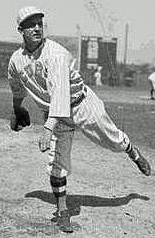  L: Hippo Vaughn; R: Game 1 Action Boston manager Ed Barrow used Babe Ruth both as a pitcher and an outfielder during the 1918 season. Babe pitched in 20 games and appeared in an additional 75 games as an outfielder, first baseman, or pinch hitter. Barrow announced that Ruth would play left field in the Series when he was not pitching.
Fear of Ruth's bat caused Cubs management to play their home games in the Series at Comiskey Park, home of the White Sox, rather than at Weeghmann Field. The dimensions at Comiskey were 50 or more feet further than the corresponding ones at Weeghmann.
Both managers tried to keep their starting pitcher a secret. Boston manager Ed Barrow kept Cubs skipper Fred Mitchell guessing until the last minute by having both southpaw Babe Ruth (13-7) and righthander Bullet Joe Bush (15-15) warming up. Then Ed pulled a surprise by selecting Ruth as his starter. To take the pressure off Babe as a hitter (.300 with 48 extra bases hits, including 11 homers–tops in the league, and 61 RBI in just 95 games), he batted him in the pitcher's traditional ninth spot.
Meanwhile, Mitchell had two lefthanders, Lefty Tyler and Hippo Vaughn warm up in tandem before sending Vaughn to start the game.
Vaughn and Ruth both started strong, and the game was scoreless into the top of the fourth. Reporter Hugh Fullerton, who would become famous for his articles questioning the play of the White Sox in the 1919 World Series, was already alert for signs of suspicious play. He had his eye on Cubs rookie SS Charlie Hollocher, who was hailed in some circles as the next Honus Wagner, who happened to be Charlie's boyhood idol. Hollocher's .316 average led the Cubs. But in his article the next day, Fullerton wrote that Hollocher "was in the wrong position for almost every batter; allowed three balls to skim past him, which a shortstop who knew the habits of the batters probably would have grabbed."
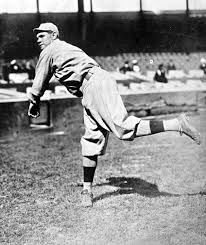 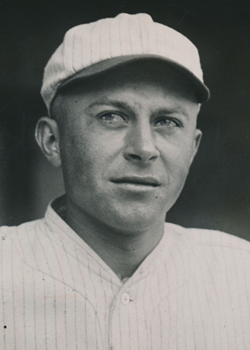 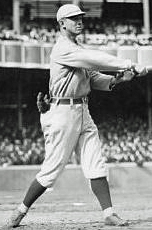 L-R: Babe Ruth; Charlie Hollocher, Dave Shean Puzzling Chicago defense would lead to the lone run of the game. After Red Sox 2B Dave Shean drew a walk, CF Amos Strunk tried to bunt but popped to the pitcher. Then LF George Whiteman, batting cleanup, lined to single to left field that moved Shean to second. Hollocher and 2B Charlie Pick failed to keep Shean from taking a large lead off second base. So when 1B Stuffy McInniss rapped a one-hop single to LF Les Mann, Shean rounded third and headed home, sliding in just before Mann's throw arrived. "Without his lead," I. E. Sanborn wrote in the Chicago Tribune, "Dave could not have counted (scored)."
Ruth made the run hold up, shutting out the Cubs on six hits. Babe wiggled out of a big jam in the 6th when CF Dode Paskert and 1B Fred Merkle got back-to-back singles with one out. But the big southpaw bore down and got Pick to ground to 1st. With runners on 2nd and 3rd, 3B Charlie Deal flew out to end the threat.
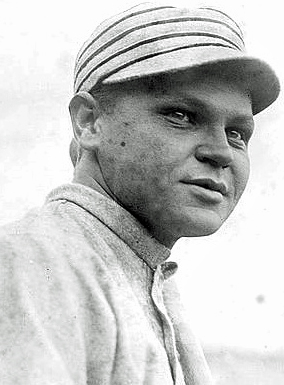 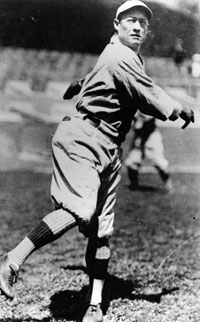 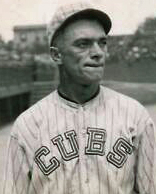  L-R: Amos Strunk, George Whiteman, Charlie Pick, Stuffy McInniss Babe retired eight in a row after that until Deal got a bunt single with two out in the ninth. But C Bill Killefer flew out to give the Red Sox the first game of the best of seven Series.
The gate receipts, based on a disappointing crowd of 19,274 at Comiskey Park were just $30,349 with the players' share $16,387. That compared to a players' share of $39,502 in the 1917 Series.
|